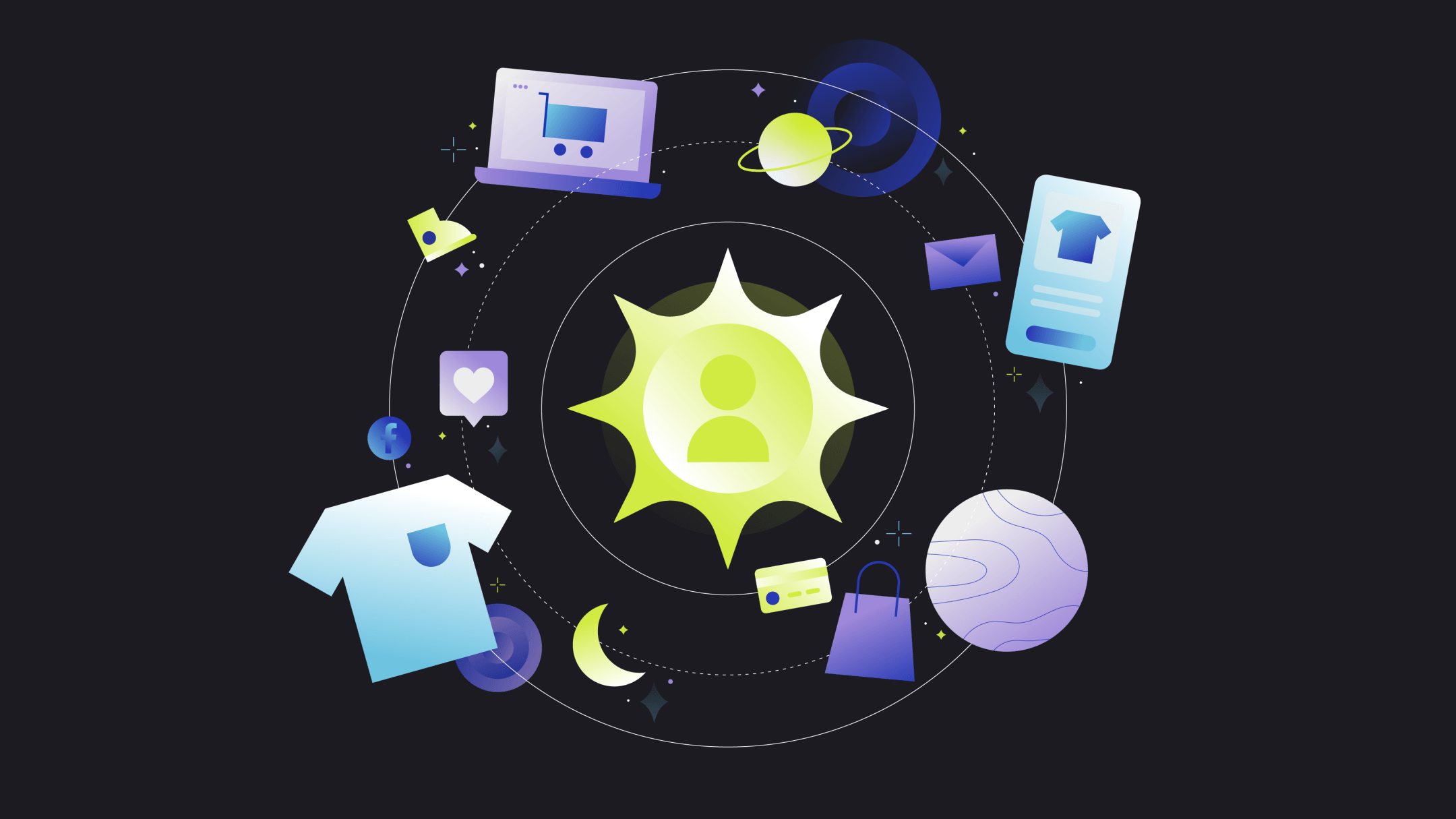Today, digitalization impacts almost every field of business, radically changing marketing dynamics and influencing trends. One of the main objectives of marketing efforts today is to reach the target audience through many different channels by taking advantage of digital channels (Gillpatrick). Despite this, offline marketing continues to be effective, and a business must utilize both of these marketing methods.
What is Omnichannel? What is Omnichannel Marketing?
Activities to reach a target audience through online and offline channels can lead to chaos if not managed properly. Omnichannel marketing, one of the latest marketing trends, eliminates this confusion and allows brands to reach their customers through integrated channels. In addition to integration, omnichannel marketing also uses target analysis when developing effective strategies.
So what exactly is omnichannel marketing? Omnichannel marketing is a strategy that aims to create the perfect customer experience by using all online and offline communication channels in an integrated way. Today, many brands actively use many communication channels, especially digital ones. However, most of the time, the strategies for these channels are implemented independently of each other rather than using an approach that looks to streamline information and data. Using the same strategy for every medium reduces the performance of communication activities and creates a negative perception by creating an incomplete customer experience. An insufficient customer experience is when there is a gap that can be found in your marketing strategy. An incomplete customer experience has the ability to disrupt your impact on marketing channels and lessen your communication with your consumers.
In omnichannel marketing, complete integration between channels, continuous, uninterrupted communication, and effective strategies are implemented simultaneously across all channels. Social media accounts, mobile applications, and physical stores are used effectively to capture existing and potential customers at the right time and in the right place.
What are the Differences Between Multichannel Marketing and Omnichannel Marketing?
Although they’re often mentioned together, there are significant differences between omnichannel and multichannel marketing, especially in terms of targets. The goal of multichannel marketing is to reach large audiences by actively using many channels simultaneously. The main purpose, however, is to create a seamless customer experience by integrating the channels used. The differences between omnichannel and multichannel marketing, which differ according to a perfect customer experience, also vary in terms of the strategies applied in the channels used to reach the customer.
While a different strategy is implemented for each channel in multichannel marketing, omnichannel marketing uses a single strategy for all channels by optimizing it according to the target audience. While brands are able to reach high awareness rates in a short period with multichannel marketing, in omnichannel marketing, brands achieve successful results in the short and long term. This increases sales rates strengthens their image, and creates awareness. The way to achieve these successful results is to use an omnichannel marketing platform service.
Which Channels does Omnichannel Marketing Include?
Within the scope of an omnichannel marketing strategy, methods such as using all channels simultaneously or selecting and integrating certain channels in line with the target audience’s preferences are applied. Each channel that enables reaching the target audience creates subtypes of an omnichannel marketing strategy. Omnichannel marketing, online and offline, consists of digital and physical channels such as:
- Email marketing
- E-commerce website
- Mobile applications
- Social media marketing
- Physical touch points such as branches
- Catalogs
- Instant messaging platforms and chatbots
- SMS/MMS
Why is Multi-Channel Marketing Not Enough?
Brand communication with consumers started with a single-channel strategy, where companies were reaching their audiences via specific channels as a one-way flow. The addition of new channels created multi-channel opportunities, but brands were still unifying the experiences across these channels.
Within the framework of multi-channel marketing, brands opened online and mobile sales channels as well as physical stores. They also started to sell through social media pages and call centers offering several channels for prospective customers to access products and services.
However, multi-channel marketing was falling short of enabling a unified brand experience on each of these channels. While this may be confusing for customers, in terms of brands, it meant not being able to reflect the brand identity fully. It also kept customer information on different platforms which led to misrecognition.
How to Implement Omnichannel Marketing?
In omnichannel marketing, it’s necessary to perform a detailed target audience analysis. The demographic structure of the target audience, their consumption habits, and the channels they frequently use guide the selection of channels to be included in the scope of omnichannel marketing. The second stage of the strategy is to segment the target audience according to their characteristics and to prepare personalized messages for each target audience segment. A brand will also need to deliver the determined message to the target audience groups through the right content and then follow up and evaluate the feedback closely. Using omnichannel marketing platform options for this provides a great advantage for brands both in terms of ease of workload and efficiency.
What are the Considerations When Implementing the Omnichannel Marketing Strategy?
The strategies of brands that follow every step of their customer’s journey and aim to reach them through the different channels they use will be more profitable than brands that don’t. Examples of successful strategies include sending an email to the customer after the customer likes a product promoted on the brand’s social media account. Another example is showing retargeting ads on different websites about a product that the customer added to the shopping cart on the e-commerce site but didn’t purchase.
While applying the omnichannel strategy, it’s important to construct content that is in line with the target audience. It’s necessary to use a communication style suitable for the target audience, to prepare remarkable, original, and informative content, and to deliver the content to the target audience through the right channels. In addition to using the right channel, determining the right time is one of the elements that increase the strategy’s effectiveness. One of the most important advantages of omnichannel marketing is that it’s measurable. In this respect, evaluation of the feedback and revisions of the strategies implemented in light of the information obtained are among the things to be considered.
Same User Experience Across All Channels
A user’s experience on your different channels should be similar. Before beginning with omnichannel marketing, you should decide how you want your brand to be seen and what important elements reflect the identity of your business. These elements should be reflected across each channel you use to promote your brand. This continuation and flow create a valuable experience for users and associate your brand with reliability. This is extremely important to keep in mind when developing an omnichannel marketing strategy.
Choosing the Right Channels
Knowing where to market your products and services and which channels are the most important to use is vital when it comes to omnichannel marketing. You want to be sure that the marketing tactics that you use are seen by the right kinds of people at exactly the right time. Being aware of which channels you use can greatly impact this.
Choosing the Right Marketing Communication Language
The language you use when communicating with your customers will help them determine whether they can trust you. Monitoring your marketing communication language across your marketing channels can greatly impact a customer’s experience with your brand. It’s important to monitor the languages used across your channels, as different audiences want to see their language being used. Data analysis and integrated consumer awareness can ensure that you’ve the tools to structure your language according to the specific traits of the audience you’re trying to reach.
Leverage User Data
The data that your customers leave on a page can be an important marketing tool. You’ve all the information you need about their likes and dislikes just by leveraging the user data they leave behind. Monitoring which products a customer has liked across different marketing channels can allow you to create a unique experience whereby you provide them with products and services best suited to their unique needs. This personalization is extremely beneficial and can help a business to succeed.
Don’t Ignore Users’ Feedback
If a customer has given you feedback, you must use this information to implement changes that may be needed. In a business, the most important person to please is always going to be the customer and the feedback you get from the consumer must be used productively. Ignoring this feedback could put you at risk of losing clients in the future and could ultimately impact your revenue and profit.
What are The Advantages of Omnichannel Marketing?
Increasing the rate of sales by providing an excellent customer experience is one of the main objectives of any omnichannel marketing strategy. In addition, excellent customer experience also has many other benefits for the brand, both directly and indirectly. The advantages of omnichannel marketing are:
- Increases brand awareness by enabling brands to take place in many channels
- Increases customer satisfaction as it facilitates shopping processes
- Creates customer loyalty by enabling brands to communicate continuously with their target audiences
- It attracts the attention of potential customers by strengthening the brand image
Using omnichannel marketing can be a great way to increase your brand’s reach and better interact with your target audience. This specific approach has many benefits, and brands that use it have a much higher success rate than those that don’t.
How Omnichannel Marketing Helps Increase Your Efficiency and Revenue
Although omnichannel marketing is associated with retail and e-commerce, it has added value for all sectors. Today’s brands get to know the consumer audience thanks to omnichannel strategies. In the rapidly digitizing business world, we can observe that the omnichannel strategy has become a necessity rather than a choice. If you want to benefit from this important strategy more effectively, you can contact our expert team, who has many years of experience helping businesses like yours. Let us empower you with tips for using your digital marketing more effectively, reaching your customers through the right channel and at the right time, and improving the overall customer experience.
Explore the World of Omnichannel Marketing with SmartMessage!
Omnichannel marketing strategies involve assessing the customer journey and determining the most relevant channels. The customer journey builder tool produced by our team here at SmartMessage is able to pick up on relevant signals that a customer will send out. This helps your business use this data, turning it into actionable touchpoints for the best communication strategy. For all your omnichannel marketing needs, contact our team to find out more.


